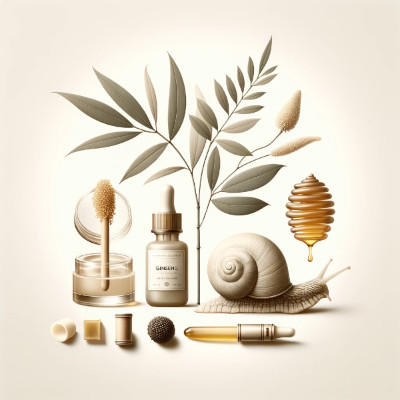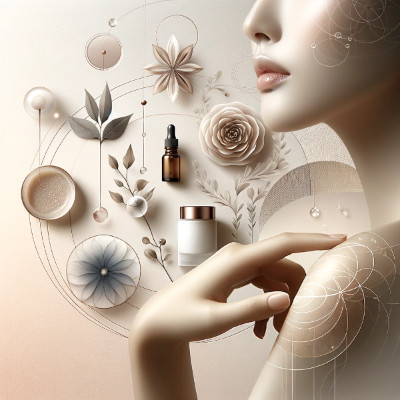
1. Introduction
Korean cosmetics, often referred to as K-Beauty, have gained worldwide popularity in recent years. Known for their innovative products, high-quality ingredients, and customized skincare routines, K-Beauty has revolutionized how we think about beauty and skincare. But what exactly is behind this fascination? In this blog post, we dive into the science behind K-Beauty. We'll explore how research and development drive the Korean cosmetics industry, examine the science behind popular products and ingredients, and discuss how these innovations are influencing skincare globally.
2. Fundamentals of K-Beauty Research
Research in the Korean cosmetics industry is deeply rooted in Korea's rich history and culture. As early as the Joseon Dynasty, natural ingredients like ginseng and green tea were used in beauty care based on Korean medicine principles. This historical connection to nature and traditional healing methods still forms the foundation for research and development in K-Beauty today.
Modern research and development in the K-Beauty industry are characterized by a unique combination of traditional knowledge and advanced science. Korean cosmetics companies invest heavily in research laboratories and scientific studies to develop innovative products that are effective, safe, and suitable for various skin types. This focus on research allows for the discovery and testing of new ingredients and formulations, putting K-Beauty at the forefront of global cosmetic innovation.
Korean cosmetics manufacturers collaborate closely with scientists, dermatologists, and other experts to gain a deep understanding of skin biology and develop products targeting specific skin concerns. This collaboration results in advanced products that work at the cellular level, both combating visible signs of aging and promoting overall skin health.
Thus, the role of research and development in K-Beauty is not just about creating new products but also constantly improving and adapting to the changing needs and desires of consumers. This ongoing process of innovation has helped the Korean cosmetics industry become a global trendsetter.
3. Innovative Ingredients and Formulations
 The Korean cosmetics industry is renowned for its innovative ingredients and formulations grounded in scientific research. Here are some key ingredients and their effects:
The Korean cosmetics industry is renowned for its innovative ingredients and formulations grounded in scientific research. Here are some key ingredients and their effects:
-
Snail Mucin: Rich in collagen, elastin, and glycolic acid, snail mucin is known for its regenerating and moisturizing properties. It helps reduce wrinkles and acne scars and improves skin elasticity.
-
Bamboo Extract: Bamboo, rich in silicon, is known for its ability to strengthen and soothe the skin. It provides antioxidant benefits and helps maintain skin hydration.
-
Ginseng: A traditional ingredient famed for its anti-aging properties. Ginseng stimulates skin regeneration and improves blood circulation, resulting in more radiant and youthful skin.
-
Propolis: This bee product, rich in antioxidants, has anti-inflammatory and antibacterial properties. It is ideal for soothing irritated skin and supporting skin regeneration.
Innovative formulations in K-Beauty products use these and other ingredients to maximize effectiveness. For example, hydrogel masks utilize their ability to deliver active ingredients deep into the skin, while liposome technologies enhance the stability and absorption of active ingredients. These formulations are designed to amplify the effects of the ingredients and have a profound impact on the skin.
4. K-Beauty and Skin Health
 The impact of K-Beauty products on skin health is increasingly supported by scientific studies. There's ample evidence on how Korean cosmetics' ingredients and formulations can effectively treat various skin issues and improve overall skin health.
The impact of K-Beauty products on skin health is increasingly supported by scientific studies. There's ample evidence on how Korean cosmetics' ingredients and formulations can effectively treat various skin issues and improve overall skin health.
Particularly, the positive effects of ingredients like tea tree oil and centella asiatica on acne and sensitive skin have been well-documented. These natural components are particularly effective in reducing inflammation and promoting skin healing.
Additionally, numerous user testimonials and case studies demonstrate the effectiveness of K-Beauty products. Many users report visible improvements in their skin issues, such as acne, redness, hyperpigmentation, and premature aging, after using Korean cosmetic products. These personal experiences highlight the practical benefits of K-Beauty products and their ability to enhance skin health and texture.
5. Technological Advances in K-Beauty
The Korean cosmetics industry is celebrated for its pioneering technological innovations. These advances have enabled the development of products that are both more effective and more personalized:
-
Biotechnology: This advanced technology is used to develop ingredients like peptides and ferments that address specific skin needs. Biotechnology can create more effective active ingredients that work at a molecular level to target issues such as wrinkles, loss of elasticity, and hyperpigmentation.
-
Microencapsulation: This technique involves encapsulating active ingredients in microscopic capsules. These capsules protect the ingredients from premature degradation and allow for a controlled release on the skin, increasing their effectiveness by releasing them exactly where needed most, while also improving stability and tolerability.
-
Personalized Skincare through AI and Skin Analysis Tools: Using artificial intelligence and advanced skin analysis tools, the K-Beauty industry is developing products tailored to users' specific skin types and needs. These personalized solutions offer tailored skincare customized based on detailed skin analysis for optimal results.
These technological innovations in the K-Beauty industry have not only improved product quality and efficacy but have also created new opportunities for personalized skincare solutions that cater to individual needs and preferences.
6. Environmental and Sustainability Aspects in the K-Beauty Industry
 Environmental and sustainability aspects are increasingly vital in the Korean cosmetics industry. These concerns are addressed through various practices and initiatives:
Environmental and sustainability aspects are increasingly vital in the Korean cosmetics industry. These concerns are addressed through various practices and initiatives:
-
Sustainable Ingredient Sourcing: Many K-Beauty brands focus on sustainably sourcing ingredients. They obtain raw materials from ethical sources and rely on organic, naturally grown ingredients that are environmentally friendly. This approach not only minimizes the products' environmental footprint but also promotes biodiversity.
-
Environmentally Friendly Packaging: A significant focus is on reducing plastic consumption by using recyclable or biodegradable packaging materials. Some brands experiment with reusable containers or offer refill packs to minimize waste.
-
Formulations without Harmful Chemicals: Developing formulations free from harmful chemicals is another step toward reducing environmental impact. By eliminating parabens, sulfates, phthalates, and other environmentally harmful substances, these products help reduce the impact on waterways and ecosystems.
These initiatives in the K-Beauty industry are part of a global trend where both consumers and producers emphasize environmentally friendly and sustainable practices. They demonstrate the industry's commitment to not only the skin health of its customers but also the health of the planet.
7. Conclusion
In summary, science plays a central role in the development of Korean cosmetics. From integrating traditional ingredients and healing methods to employing cutting-edge biotechnological processes and AI-based personalization, scientific research continually drives innovation in K-Beauty. The increasing focus on sustainability and eco-friendly practices also shows that the industry is serious about skin health and environmental protection. The Korean cosmetics industry is thus setting standards for the global beauty industry and will continue to inspire with its scientifically based, innovative products in the future.